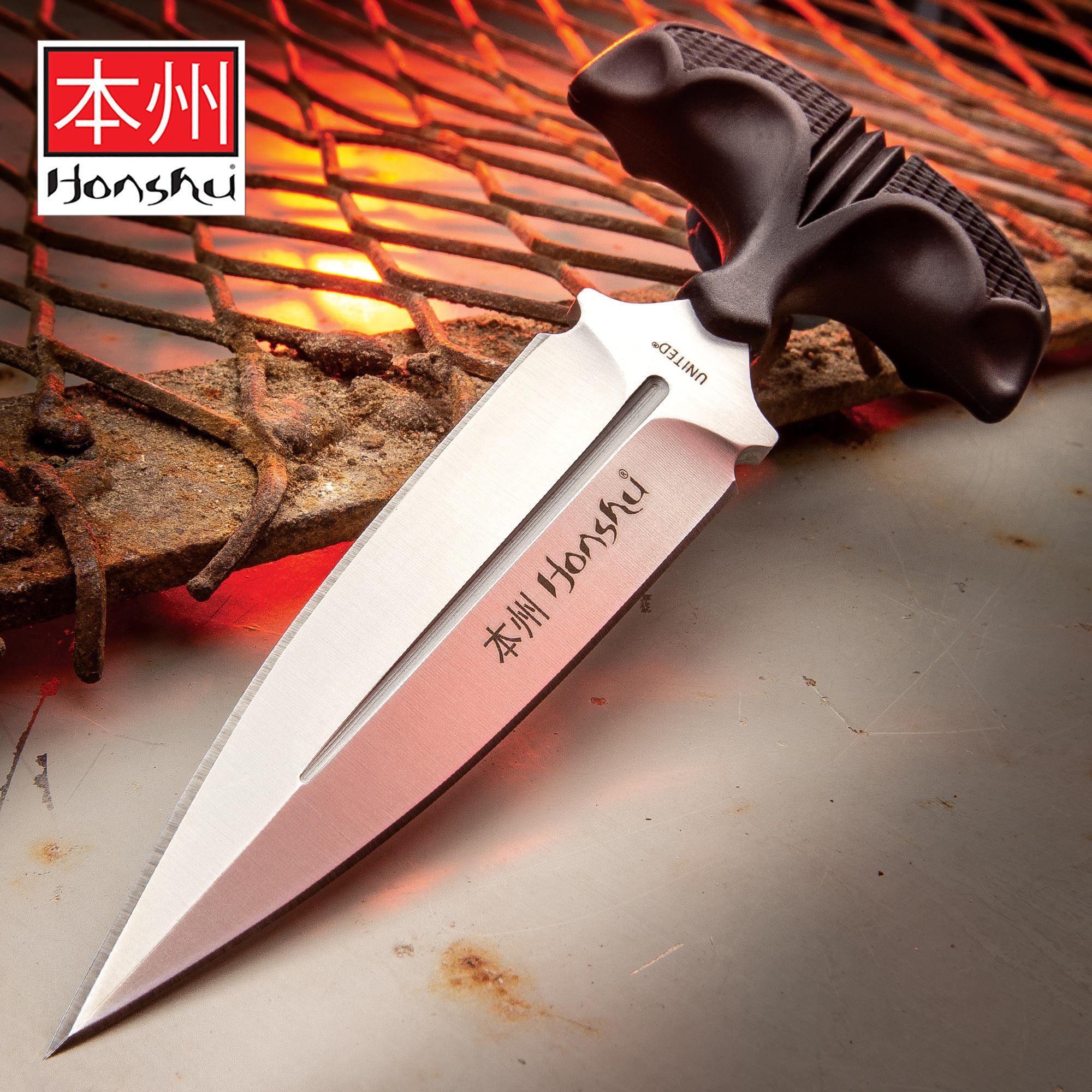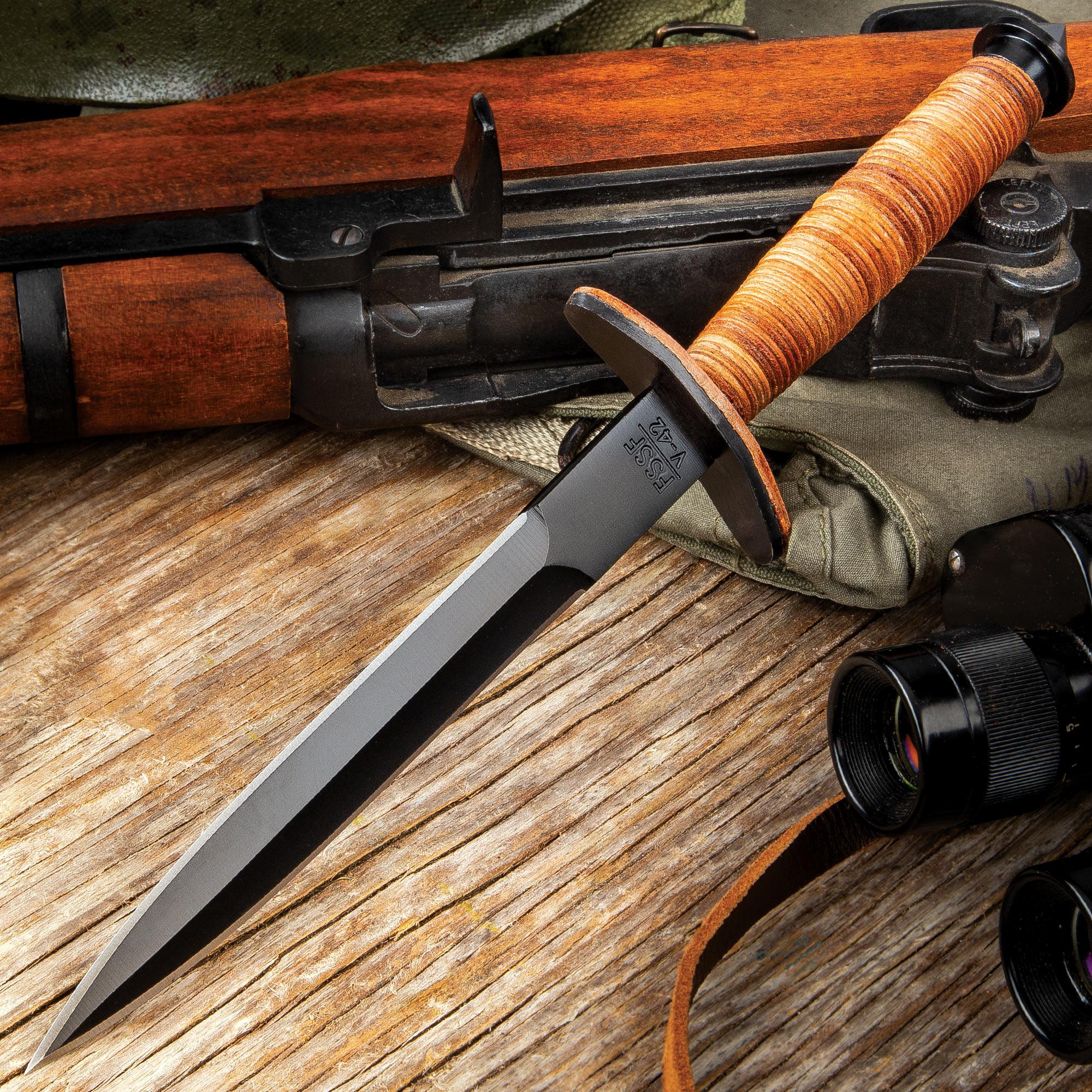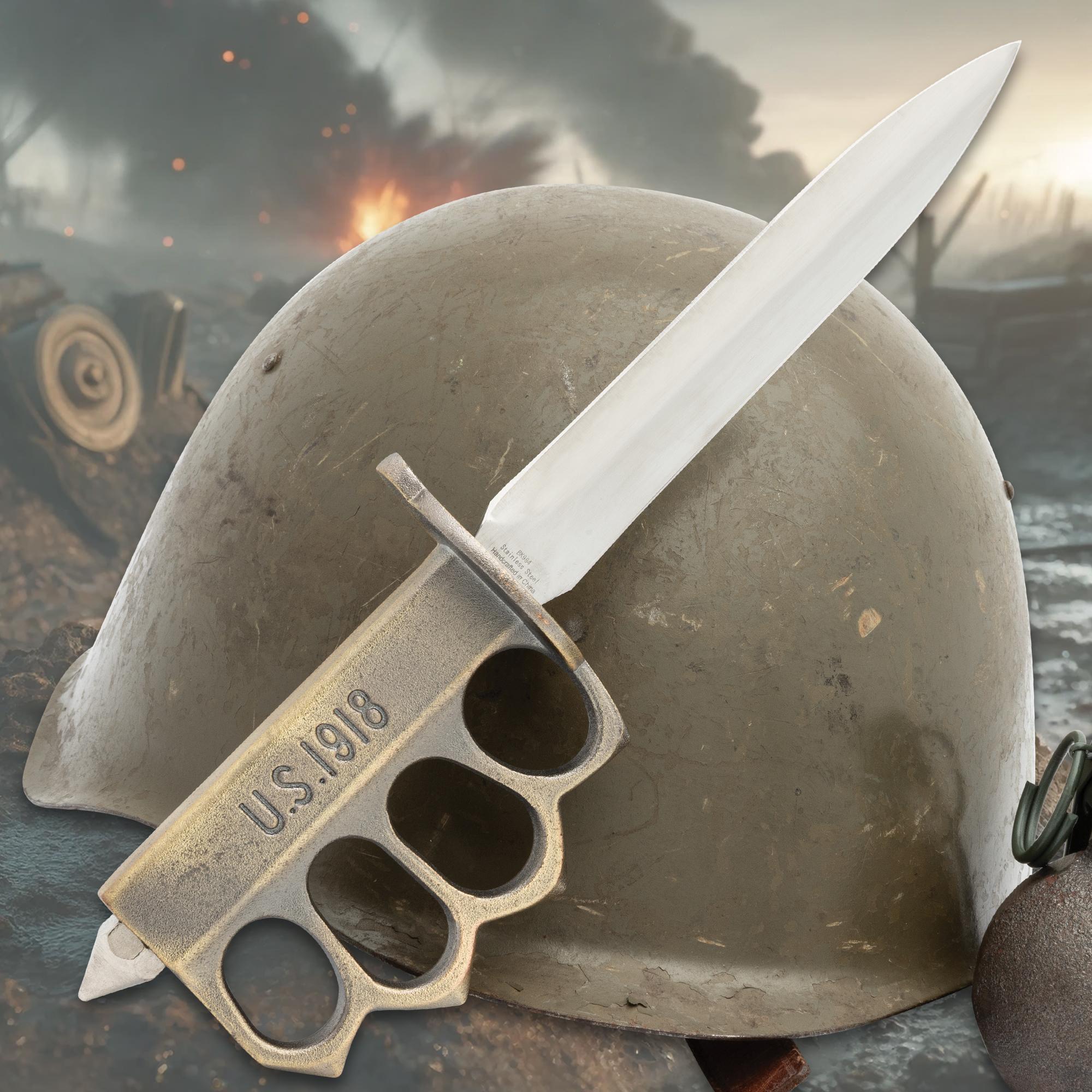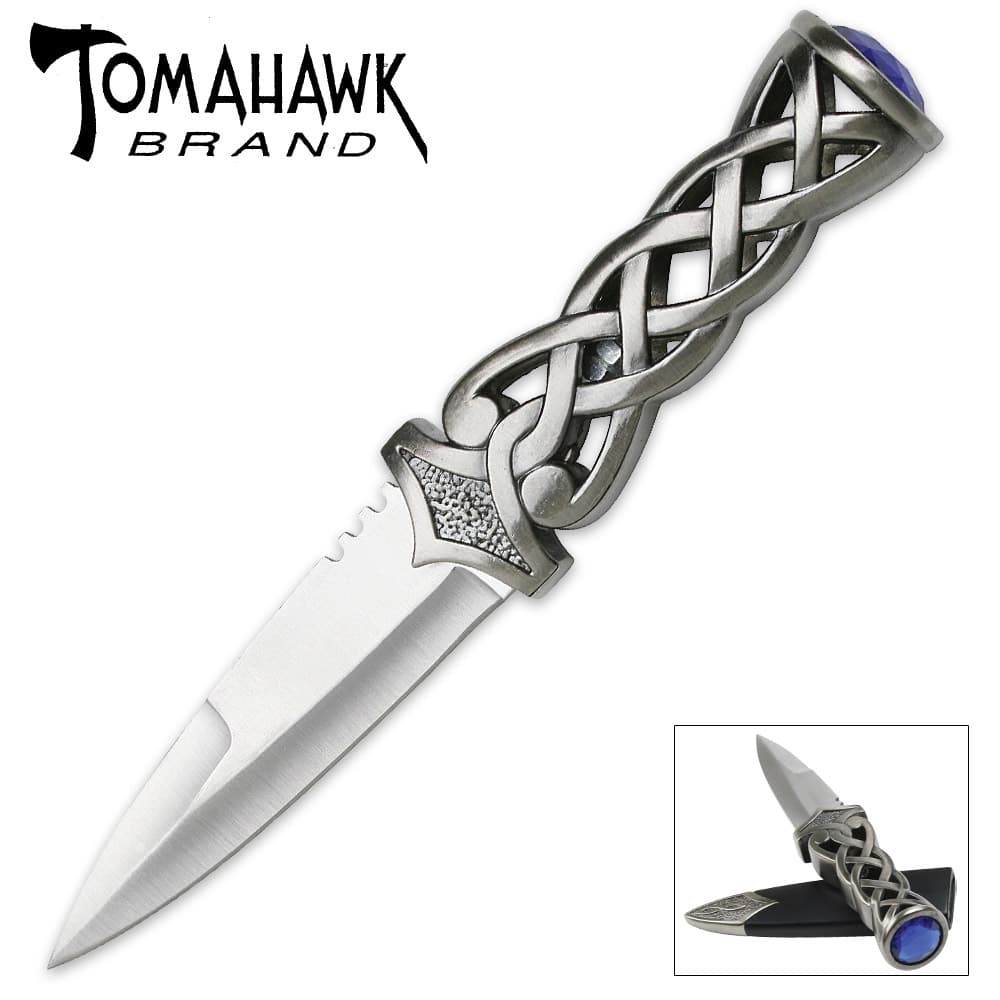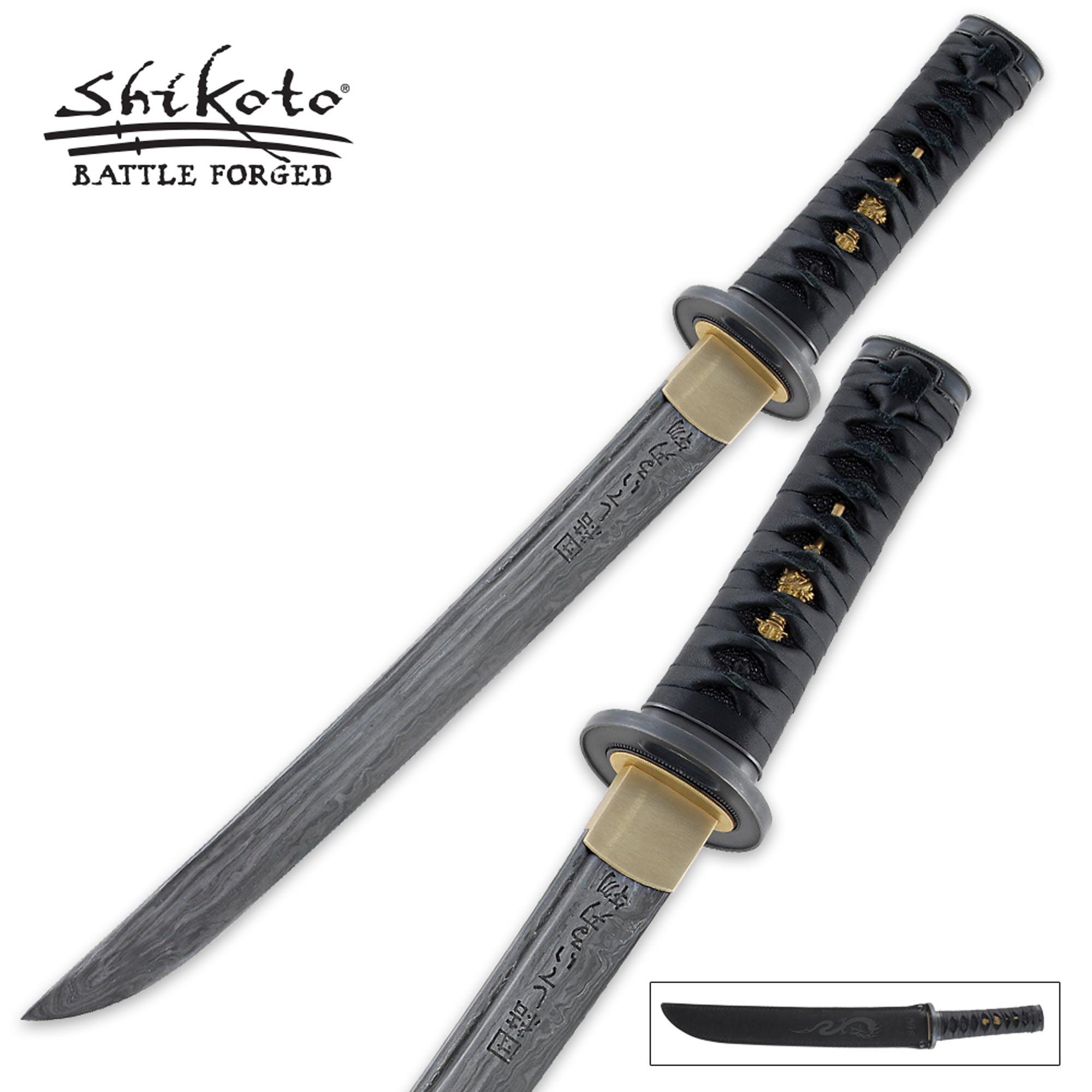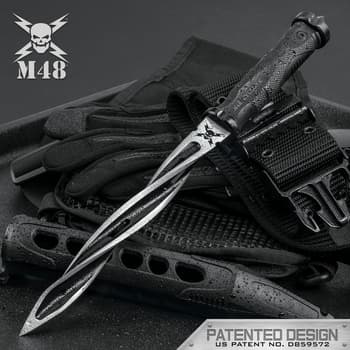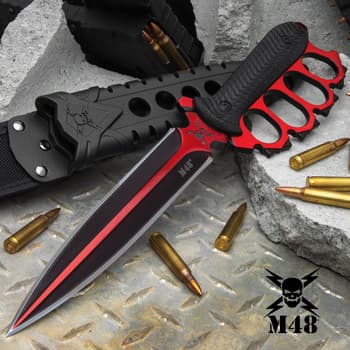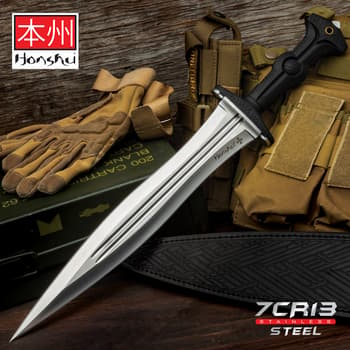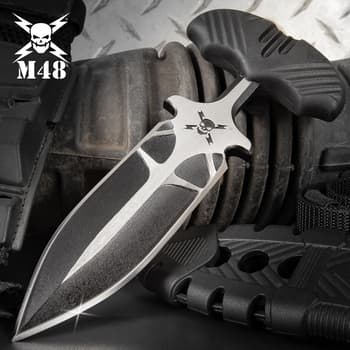A Discussion on Daggers

By Desiree Weeks
A dagger is a close combat weapon that usually has a double-edged blade and piercing point for thrusting and stabbing. More decorative versions of this fighting knife can be found throughout history for rituals and ceremonies. While daggers may have many of the same elements, they can also be vastly different in appearance. Here are just a few examples of the types of daggers you can find.
Push Dagger
The push dagger is recognizable by its “T” shaped handle that is meant to be held in a closed fist. It’s a great concealed weapon as the blade extends from the front of the fist between the index and middle fingers.
A prime example of a push dagger is the Honshu Push Dagger. It has the notable T-shaped handle, which is rubberized for a secure grip, and a 4” double edged blade made of AUS-6 stainless steel.
Stiletto Dagger
As the name implies, the Stiletto Dagger has a distinct blade that is long and slender. The needle-like point makes this dagger more of a stabbing weapon than slashing. The Stiletto style has a rich history dating back to 15th century Italy. The slim style made it the perfect choice for assassins as it is silent and easily concealed in a sleeve. As time has progressed, the term “stiletto” has become used for any narrow blade with little cutting surface and needle-like point, like the U.S. V-42 Stiletto, which we just so happen to have a replica of.
The V42 Stiletto Dagger was designed in part by Colonel Robert T. Frederick, the Commanding Officer of the First Special Force, The Devil’s Brigade. It became the trademark weapon of the Devil’s Brigade and members were trained extensively in its use. This historically accurate replica has a double-edged stiletto blade along with a stacked leather handle just like the original.
Trench Knife
Another aptly named weapon is the trench knife which was designed for use in confined areas like trenches. It was developed for soldiers to use during WWI and a newly designed trench knife was used during WWII.
These knives are also known as “knuckle knives” and this example shows just why that is. The 1918 WWI Trench Knife Replica is an exact replica of the blade issued to troops in WWI. It features a heavy-duty knuckle guard with skull crusher and an AUS-6 stainless steel double-edged blade, which allowed soldiers to not only stab but also bludgeon enemies.
Scottish Dirk
Another dagger with a bit of history behind it is the Scottish dirk, also known as the Highland dirk. This weapon was used by Highlanders as an everyday knife while also being symbolic of the oaths sworn as the steel was believed to be holy. It is believed to have been developed in the 16th century with more modern developments of the weapon taking place in the 19th century. It was in this later century that fancier fittings became popular.
A beautiful Scottish dirk replica is the Twisted Steel Scottish Dirk Knife. It has a unique twisted handle with a faux blue jewel in the pommel. The ornate handle design is also mimicked in the scabbard, giving it a uniform appearance. The blade itself is 4 1/2" and made of stainless steel. This would be an ideal collector piece.
Tanto
Traditional Japanese culture has produced some of the most beautifully ornate weapons which include the tanto. A tanto is a single- or double-edged dagger that is primarily used for stabbing. They were most often carried by samurai along with a tachi sword, but women were also known to carry a small tanto called a “kaiken” for self-defense.
A piece that recreates the historic look of the tanto is the Shikoto Hand Forged Damascus Tanto. It has a heat-forged Damascus steel blade with laser etchings that translate to “United Strong Steel.” The handle is traditional genuine ray skin with a brass menuki peaking out from the cord wrap.
Related Products






















